In a day and age where guns like the SIG P365 rule, we’ve seen a slight decline in pocket pistols. A decade ago, they ruled the roost, and these days they still serve an important niche. The pocket pistol is the gun you can carry regardless of your style of dress. They are convenient firearms that can tag along when carrying a larger gun simply isn’t possible. For some, they serve as backup guns, and for others, they are an option they can carry daily without worry.
In recent months I’ve dived headfirst into pocket pistols and have attempted to find what works best from small guns. I’ve given this not only a lot of thought but research and testing, which has largely guided me away from what many would consider a modern pocket pistol. I’ve aimed for guns that are easy to carry and that aren’t exactly difficult to shoot.
Allow my choices in top pocket pistols to better explain my view of what a pocket pistol should be.
KelTec P32
First on our list tops the charts for its low price, its often for sale for under 300 dollars. KelTec admittedly can require some time to get a design right. However, they’ve been producing the P32 since 1999, and they actually started the modern pocket pistol craze with this little gun. The P32 is still the lightest polymer frame semi-auto pistol on the market at only 6.6 ounces. The gun uses a DAO trigger and a seven-round magazine and is rather plain in every other way.
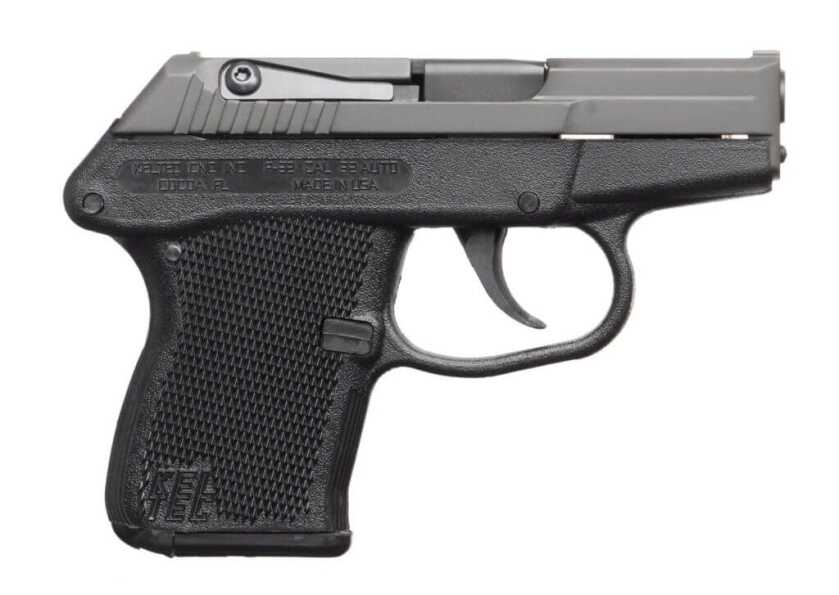
The use of the .32 ACP cartridge makes this gun pleasant to shoot, and it doesn’t have the same hand-slapping effect as the .380 ACP. It’s easy to shoot accurately and even quickly. This little gun is micro-sized, and one of the best options for pocket carry on a budget.
Ruger LCP 2 Literack .22LR
A lot of folks will hoot and holler about using the .22LR for self-defense, but with guns this small, a lot of the advantages of larger calibers are gone. You don’t get much expansion from a .380 fired from a gun this size. You’re just poking holes ultimately, and with the right ammo, the .22LR can poke holes deep enough to matter. The Ruger LCP 2 Literack is a very easy-to-use gun for those with minimal hand strength.

It barely has any recoil, and shooting it accurately and quickly is easy. The little gun packs ten rounds and still drops with ease into your pocket. Minimal recoil makes follow-up shots easy, and the Literack design makes the gun easy to use. The LCP 2 in 22LR provides great reliability, and if you use the right ammo, it will punch deep enough to matter.
Seecamp .32 ACP
The KelTec P32 might be the lightest centerfire automatic on the market, but the Seecamp is the smallest. It chambers the .32 ACP, which from this nearly 12-ounce gun, is downright soft shooting. The Seecamp is ultra small with an overall length of 4.25 inches and a height of 3.25 inches total. The gun defines pocket pistol, and the little fella even lacks sights! It’s a point-and-shoot weapon, something we’d often call a belly gun.
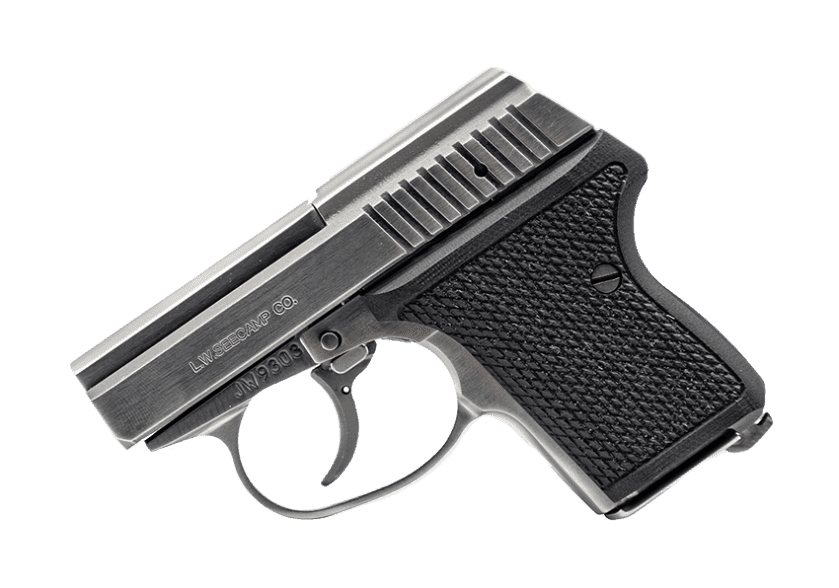
The little Seecamp isn’t for engagements outside a short room, but it does draw very smoothly and carries easily. The Seecamp six-round magazine packs just enough punch to matter, and the gun uses a delayed blowback system that’s unique and well done. This keeps the gun ultra-small and concealable.
SIG P938
The SIG P938 is about as big as a pocket pistol can get. This quasi-1911-ish-like design offers you a 9mm chambering and single stack magazine. The gun had a manual safety and a single action-only design. When paired with full-size sights, it’s an easy gun to shoot. In fact, at first shot, I thought the P938 defied physics.
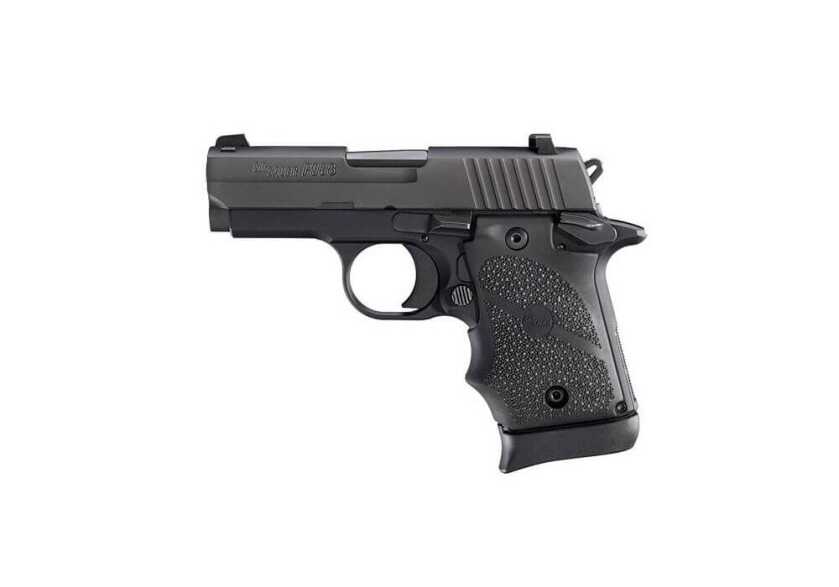
It was quite soft for a 9mm micro-compact. It handled extremely smoothly, and the gun didn’t buck hard against your hand. Maybe it is the all-metal frame or John Browning’s design that just works and works well. The P938 is one of the few 9mm guns out there that qualify as a true pocket pistol.
Ruger LCP Max
The only .380 ACP I like in the pocket pistol format is the LCP Max. This gun took the technology that made the P365 so successful and shrunk it into a .380 ACP-sized platform. The LCP Max is a hair heavier and a hair bigger in all directions than the LCP, but it also packs ten rounds in a flush-fitting magazine and 12 rounds in a slightly extended option. That’s a lot of lead for a pocket pistol.

The LCP Max still has some rough recoil, but the slightly heavier and slightly wider gun makes it a little better than the LCP series. It’s still snappy and takes a firm grip to keep the gun on target. If you can get past that, you have a very capable defensive handgun with a double stack’s worth of capacity.
Beretta Tomcat
The Beretta Tomcat is a classic handgun, and it’s been around for a long time. Over the years, it’s been improved here and there to make it one of the ultimate choices in pocket pistols. The DA/SA design that Beretta is famous for is present. The single action is quite crisp and nice. The double action isn’t too bad, either.
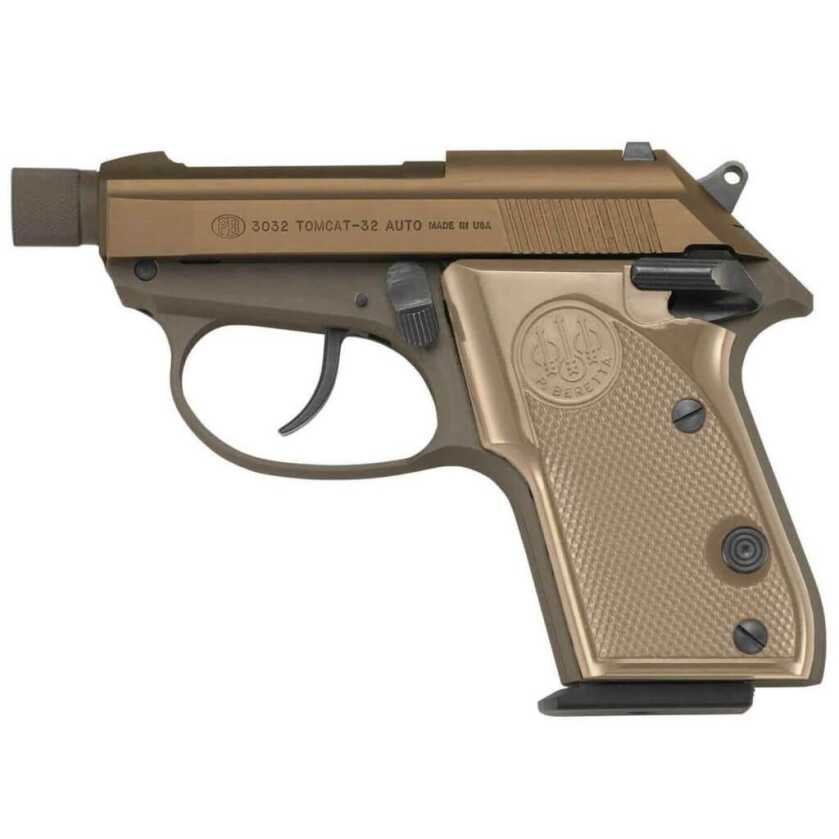
The Tomcat chambers the .32 ACP and uses the fame tip-up barrel design that makes it a dream for those with weaker hands. They can directly load the round into the chamber without racking the slide. The Tomcat is also a bit heavy and a bit wide, but that makes the .32 ACP even softer shooting.
Standard Manufacturing Switch
The Switch is a micro revolver designed to fold in half. The revolver portions fold into the grip, and this acts as a built-in holster with full trigger coverage. When folded, it can be dropped into your pocket as easily as a pocket knife. You get five rounds of either .22LR or .22 Magnum in a very small package.
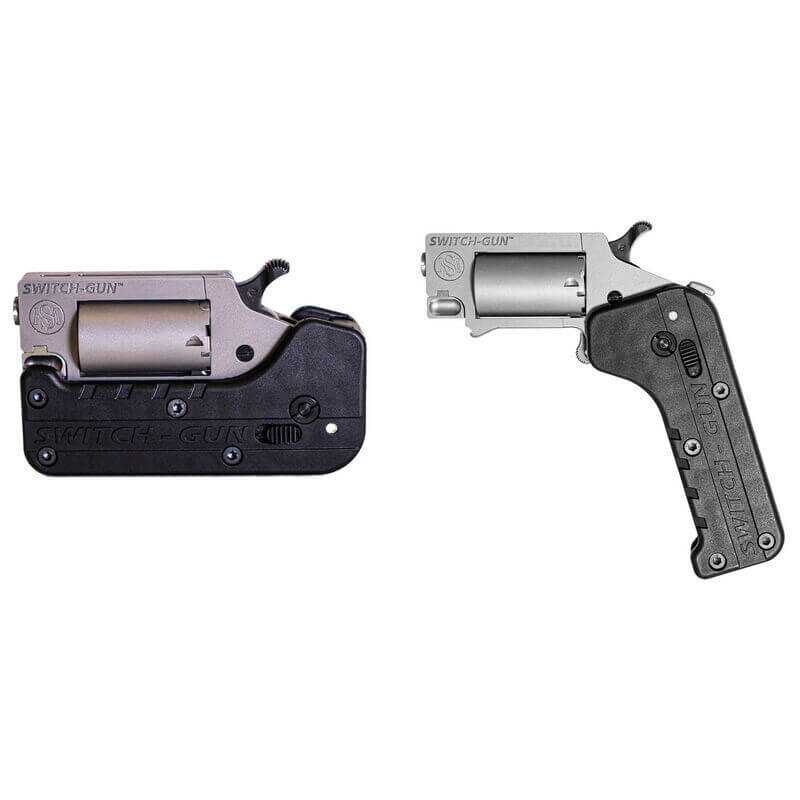
This gun is small enough to fit into the pocket of women’s jeans! While small, the folding grip is big enough to get a grip and aim the little gun. You don’t have much for sights, but this falls into the belly gun category for sure. It’s ultra-small, light, and easy to carry. An SAO in .22 isn’t much, but it’s better than mean words or sharp sticks.
Pocket Pistols For All
As you can see, I’m not a fan of the traditional, modern .380 ACP pocket pistol. The original LCP, the Bodyguard, and the P3AT are not the best option. Their small size and light weight make the recoil of the .380 ACP harsh. Even for those with tough hands, the little guns offer barely any grip, and recoil can easily shove the gun around in your hand and make it difficult to shoot accurately and consistently.
The use of smaller calibers seems odd, but in my research and testing, the smaller calibers have benefits. In ultra-small guns, you are already sacrificing expansion to provide proper penetration. Once expansion is thrown out the window, we are just poking holes. It doesn’t make much of a difference if one bullet is fractionally larger than another in this case. Smaller subcaliber options provide less recoil and higher capacity. That makes follow-up shots easier to take quickly and accurately.
These are what I think are good pocket pistols, but what do you think? Let us know below!
*** Buy and Sell on GunsAmerica! ***


I had a Milford made Seecamp for several years. It was the earlier design and had a statement that you should use Winchester Silver-tips in it. It was .32acp and the only problems I had with it was dissemble it and one time the slide just blew off the gun. I sold it, but I miss it as it was easy to drop in my pocket. I may get another in the future but in .380acp. My favorite pocket gun is one of the mini-revolvers in .22mag. As a revolver it can be left loaded for a longer time than a pistol as you don’t have the mag spring to worry about.
Curious about .25 caliber pistols.
Friends don’t let friends buy 25 ACPs. It has less energy than a 22 LR
I ditched a smith snub nosed 38 for my duty back up in an ankle holster for the Ruger LCP MAX carried ankle as well. Easy to reach on my ankle sitting in patrol car when it would take me 5 minutes to finally draw my duty gun because your crammed in there. 13 rds instead of 5, factory front nitesight…I love the thing. Did take a couple boxes to get used too. Wasn’t to impressed right up front as I wasn’t shooting to my usual standards. But with a little extra practice, that MAX has been a great gun. Now I often switch holsters to a kydex IWB and carry it off duty as well. Ps. Either shoot 200 right off the bat or take some POLISHING compound to the feed ramp with your dremel. Don’t remove metal, just smooth her up a bit.
If the Sig 938 in 9mm is listed, why not the 238 in .380? Same gun essentially but the 238 is more easily controlled with less recoil and easier to stay on target. I also have the P32 and Seecamp and think all three are good choices with the right ammo.
Good article. I own a Sig 938 and its exactly as the author states. I do have to question why the author has overlooked the Kahr P380. Probably the lightest and smallest .380 on the market, has tritium sights, and has a target barrel to give it exceptional accuracy and the ability to use Buffalo Bore ammo (no plus P for .380).
Taurus Spectrum .380. 14 oz. with fully loaded finger grip magazine, second strike capability, no annoying ‘blade trigger’ or protruding controls, decent trigger, very simple field strip and reassembly. Dot the sights with white or color of your choice paint and the presentation after draw becomes like reaching out for a friendly handshake.
I have carried two daily for the past three years in a Bianchi minimalist belt slide holster at three o’clock and nine o’clock plus an extra mag. No printing whatsoever, “Nothing to see here, move along”….
No longer in production.
Too bad. I also noticed the Kel Tec PF9 is also no longer in production. It is a great pocket/backup pistol, although I would never recommend it for beginners.
Nothing wrong with .22LR overall, but the round was -NEVER- designed to function in self loading firearms. And it only does so with moderate reliability, even in the best of semi-auto guns. I would not rely on it for personal defense in an autopistol platform.
Well said, and spot on. Pocket .22 autos are definitely prone to malfunction.
I like the Remington RM 380, a seven round double action pistol that is all metal and handles recoil well. I have used one since they came out and never had any trouble, that’s my two cents.
What about the SCCY cheap 2well made and lifetime guarantee?
Blue Dog splugered on an SCCY a while back. I think he figured that model was less violent then say the Glock or some of those violent guns in Chicago.
Hahaha! Good one. Never miss an opportunity to poke fun at Blue Dog.
The Glock 42 .380 is a great choice for a pocket pistol. The G42 design really tames the recoil of the .380 well. A Magguts +1 kit installed in a G42 magazine is reliable and gives you an extra round. I pocket carry one regularly. It is nice to carry and shoot.
Agreed. I don’t feel any pain from a .380 round with this gun, and the +1 round is a nice, affordable addition. I also like the green lasers on these guns, making them very practical for self defense.
What happened to the Kimbers?
Have owned and carried each model of the Seacamp, excellent pistol , but my fall back for years now has been the 2nd gen Ruger LCR in 380 DAO carried in a neck holster made from kydex, the little ” nose” guns for me will never be other than a DAO model
That should have read LCP😉
I know you can’t write about every single option in a given category, but Bond Arms (An American company) builds a plethora of pocket-size pistols. I owned an original Snake Slayer, and had no issue with recoil from .410 shotshells or .45 LC rounds. At expected ranges for a pocket piece, either choice out of that derringer packs a lot more “oomph” compared to the rounds you described.
Thanks for your article.
Poor researched article.
The S&W CSX is the top dog in that category now. But if you’re allowing.22, you left out the TPH.
Poor researched article.
The S&W CSX is the top dog in that category now. But if you’re allowing.22, you left out the TPH.